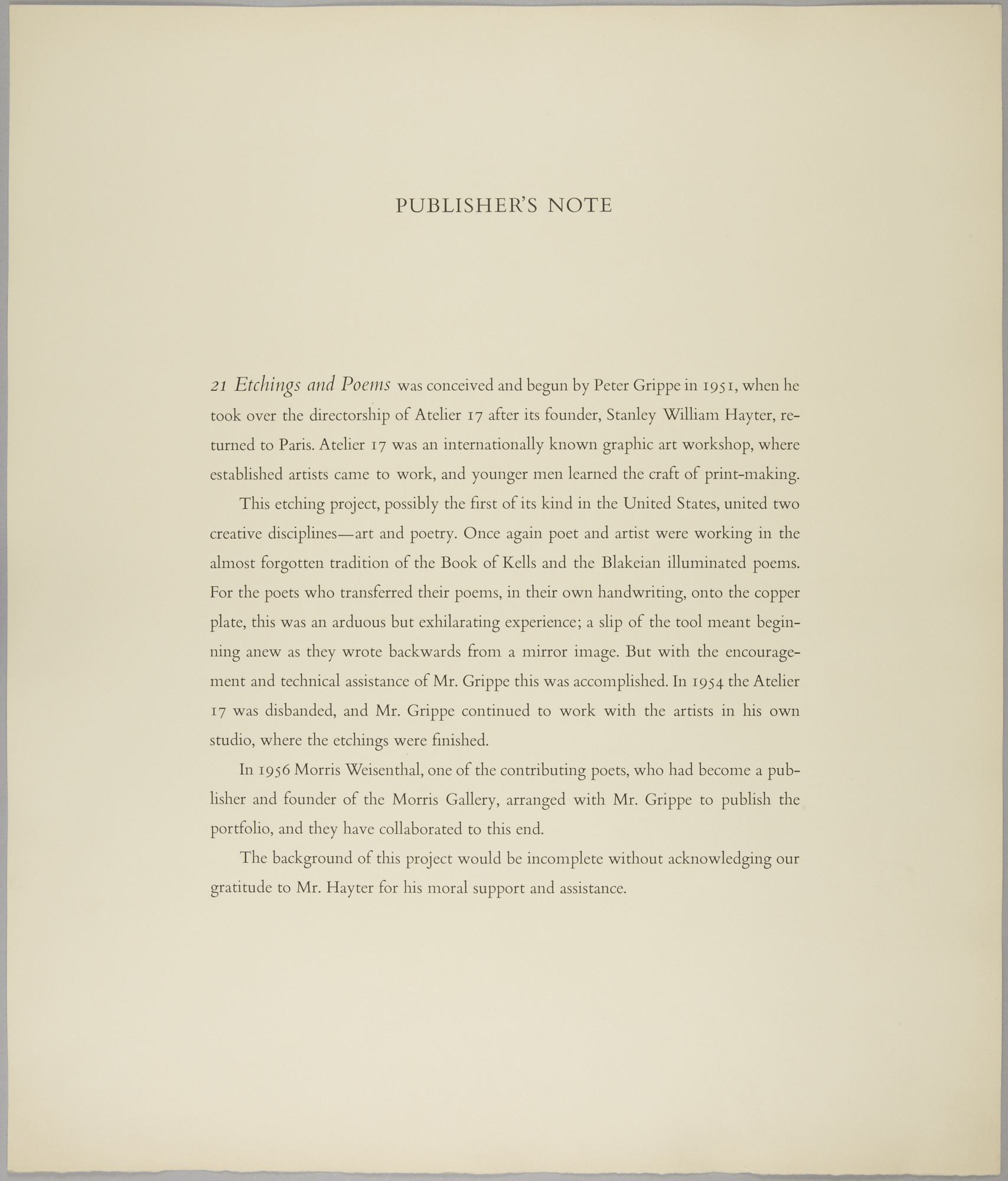Louis Schanker
"Though much of my work is generally classified as abstract, all of my work develops from natural forms. I have great respect for the forms of nature and an inherent need to express myself in relation to those forms. No matter how far my experimental design may take me … there remains always a core of objective reality which I have no desire to destroy or even to impair but only to investigate, analyze, develop."(1)
Louis Schanker was one of many members of the American Abstract Artists who chose to base his art in the objects, patterns, and rhythms of nature. Although never a student of Hans Hofmann, Schanker's ideas about art had many parallels with Hofmann's. Concern for the spatial dynamics of a painting's surface, and an insistence on some aspect of nature as a starting point for art, are two areas that mirror a shared philosophy between the two artists. Although much of Schanker's later work is completely abstract, during the 1930s and 1940s he frequently used direct, identifiable themes—motifs drawn from sports, his early years working for a circus, and even socially conscious subjects not normally employed by abstract artists.(2)
As a youth, Louis Schanker quit school and ran away to join the circus. He put in two years of "interesting but grueling hard labor."(3) After leaving the circus, he worked as a laborer in the wheatfields of Canada and the Dakotas, as a "gandy dancer" on the Erie Railroad, and as a stevedore on Great Lakes steamers. For almost a year Schanker cast his lot with hobos, riding freight trains throughout the country. In 1919, he put this itinerant life behind him and began attending night classes at Cooper Union. Subsequently, he studied at the Art Students League of New York and the Educational Alliance. Schanker spent 1931 and 1932 in Paris. He took classes at the Académie de la Grande Chaumière and worked on his own, doing "plein air" the work of Renoir, Degas, and Signac made a deep impression on the young artist. After he moved to Mallorca in 1933, Schanker began abstracting form to a greater degree and incorporating Cubist devices of uptilted planes and prismatic color in his work.
During the mid 1930s, Schanker began making prints and subsequently became a graphic arts supervisor for the WPA. He also completed murals for radio station WNYC, the Neponsit Beach Hospital in Long Island, and the Science and Health building at the 1939 New York World's Fair. During World War II, Schanker worked as a shipfitter and began teaching the technique of color woodblock printing at the New School for Social Research. In 1949, he became an assistant professor at Bard College, where he remained until his retirement.
Throughout the 1930s and 1940s, Schanker exhibited frequently in group shows both in museums and in commercial galleries. He became especially well known for his innovations as a printmaker. Schanker belonged to The Ten, a group that exhibited together in protest against the hegemony of Americanscene painting in Whitney exhibitions and in support of artistic experimentation and an international (rather than nativist) outlook in art.(4)
Schanker imbued his prints, paintings, and sculpture with an animated expressionism that aims at a fundamental emotional structure. Sculptures such as Owl, carved in 1937, adroitly convey not only the bird's physical appearance, but the quality of mystery that has made it a symbol of wisdom and secrecy. Three Men, exhibited in the American Abstract Artists' first annual exhibition in 1937, exemplifies the expressive, angular animation for which Schanker's work was frequently praised in press reviews of the 1930s.
1. Louis Schanker, "The Ides of Art: Eleven Graphic Artists Write," Tiger's Eye 8 (June 1949): 45.
2. In a letter to the editor of Art News in 1938, an art historian noted the similarities between Schanker's Circus, a WPA mural done for the children's dining room in the Neponsit Beach Hospital and Giovanni Battista Tiepolo's I Saltimbanchi. In his reply, Schanker said that he had chosen his subject matter based on his own experience. "I ran away from school to join the 'big top' and put in two years of interesting but grueling hard labor as a 'canvas-man,' 'animal ostler,' and 'property-man' for clowns, acrobats and other performers with one of the best known American circuses. The visual memories that I retain of this period are, needless to say, vivid if not particularly humorous;" "The Artist Replies," Art News 37 (29 October 1938): 16.
3. Louis Schanker, letter to the editor, Art News 37 (29 October 1938): 16, 21. I am grateful to Joel Schanker, Louis's brother, for relating details about Schanker's life and work in a videotaped interview, 9 June 1988.
4. Other members were Ben-Zion, Ilya Bolotowsky, Louis Harris, Earl Kerkam, Ralph Rosenborg, Joseph Solman, Adolph Gottlieb, and Mark Rothko (then still using the name Marcus Rothkowitz). The group associated for five years and held exhibitions at Montross, Passedoit, and Mercury galleries, and at the Galérie Bonaparte in Paris. For further information about The Ten, see Lucy McCormick Embick, "The Expressionist Current in New York's Avant-Garde: The Paintings of The Ten" (Master's thesis, University of Oregon, 1982).
Virginia M. Mecklenburg The Patricia and Phillip Frost Collection: American Abstraction 1930–1945 (Washington, D.C.: Smithsonian Institution Press for the National Museum of American Art, 1989























